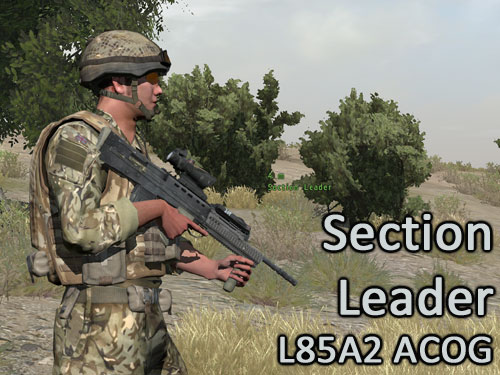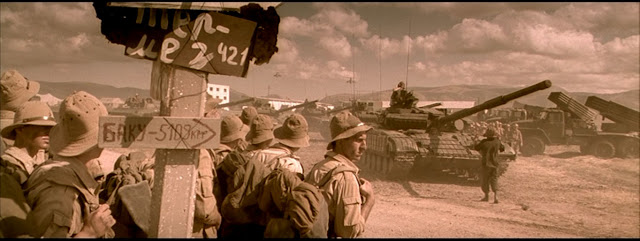That was their word for us: 'Mosquitoes'. Ed Macy about the nickname the Taliban fighters gave to the British AH-64 attack helicopters. Quoted from Apache.
I am a bit obsessed with helicopter operations lately.
While messing around with ArmA2 (heliborne assaults and such), I wondered about the troops fighting the air assault. More in particular, insurgents.
What's like to deal with an attack helicopter by using an RPG-7?
In real life, not easy.
But real life is over-rated :), I think the virtual world of ArmA2 will do for the time being. :)
Off course ArmA2 has its limits but so does my question. For starters the computer controlled units do behave in certain ways that expose them to fire. Computer controlled attack helicopters overfly their targets, fly straight patterns, hover in questionable places, don't take advantage of their weapons range, etc. Only thing nice about computer-controlled attack helicopters is how they do running attacks instead of attacks from the hover. Having killed myself one millions times in DCS Black Shark because I got trapped in my rotors' downwash while hovering and trying to evade enemy fire at the same time, I'm now a big fan of running attacks. So is the US Army.
That's enough digression. Here's the deal: a flight of two computer-controlled US AH-64Ds against an RGP-7 team (me and my ammo man). Semi-urban setting, great visibility. Mano a mano.
The RPG-7 is a very simple weapon to use. Useful mostly at relatively short ranges (200 meters and below), it was designed for fire support and ambushing armored vehicles. Yeah, helicopters are not in the list. But it has been used against them: Mogadishu, Afghanistan, Chechnya, etc.
Here are a few notes from this scenario.
I tried to stay out of sight, close with the attack helicopters and fire while they were looking elsewhere. Easy to say, not so easy to do. I got killed more than I killed them. My ammo man, computer-controlled guy, would always give up our position by walking right in the middle of an intersection. When the Apaches see you, it's hard to shake them from above you.
 |
| The AI in ArmA2 doesn't cheat. Here is the fire from an Apache, impacting right where we were a few seconds ago. For the record, Jalil's corner shop will need some serious repair. |
Avoid standing in the clear, off course, and keep moving. Cross streets quickly and using the shortest distance at a perpendicular angle. Zig-zagging is useless, the target acquisition of the Apache can take care of a car moving at 60 mph so your fancy running is a piece of cake for them. Once across the street, move away from the spot you just reached: the computer-controlled Apache may have seen you crossing the street and it will fire right at your destination spot even when there is no direct line of sight to you (don't forget these helicopters fire high caliber rounds that will go through walls).
 |
| The sights of the RPG-7 are not designed for this. I never hit a moving helicopter. |
The best chances to hit a helicopter is when it is hovering. In the picture above, I was trying to hit a moving Apache and the only thing I got out of this folly was to get their aiming reticles right onto me.
Hug the walls of buildings like dear life, but treat buildings like temporary shelters, not fighting fortresses. There is no building in ArmA2 that can't be demolished by the arsenal of an Apache.
 |
| The only thing that saved us here is the big angle between the ground, ours and the helicopter's position. |
When you stop to observe or to fire, always have an escape route that can't be observed by the helicopter.
 |
| Mega! We are still too far from them. These alleys/corridors that go across blocks are great to take you from street to street without being spotted. |
You will have to move not only in a defensive posture avoiding fire, but also while on the offense. In the few times that I could hit an helicopter it was after running a lot to get into a firing position.
 |
| One of those few seconds when you feel the hunter. The helicopter is flying away from our position. Make sure the wingman has also passed you. Keep alert! The Apache can literally turn on a dime. |
Patience, can't have too much of it. This is not Call of Duty!
 |
| Hovering at a medium range from us, this Apache is asking for trouble. I don't think the power lines would interfere with my shot here, but I wonder if they would in real life. |
 |
| This Apache is forcing us out from the built up area. Extra careful now as buildings become more scarce. |
Rule of thumb: fire at the helicopter only when its relative size is at least as big as the widht of the aiming reticle. At least for a man of poor marksmanship like me.
 |
| You can almost see the faces of the pilots at this range. Secondary effects include unhealthy doses of cannon rounds coming your way. |
Have the discipline of firing and reloading instantly thereafter. Re-loading a real life RPG-7 takes 14 seconds at least.
 |
| A good hit like this one doesn't warrant a downed helicopter. Reload right away, the mosquito can still bite you! |
And in case you haven't figured it out yet: shoot at the helicopter from the rear or flanks. I doubt you will ever get a chance of actually aiming at one from its front.
 |
Steady, steady ... Please don't turn ...
|
Cheers,





















































